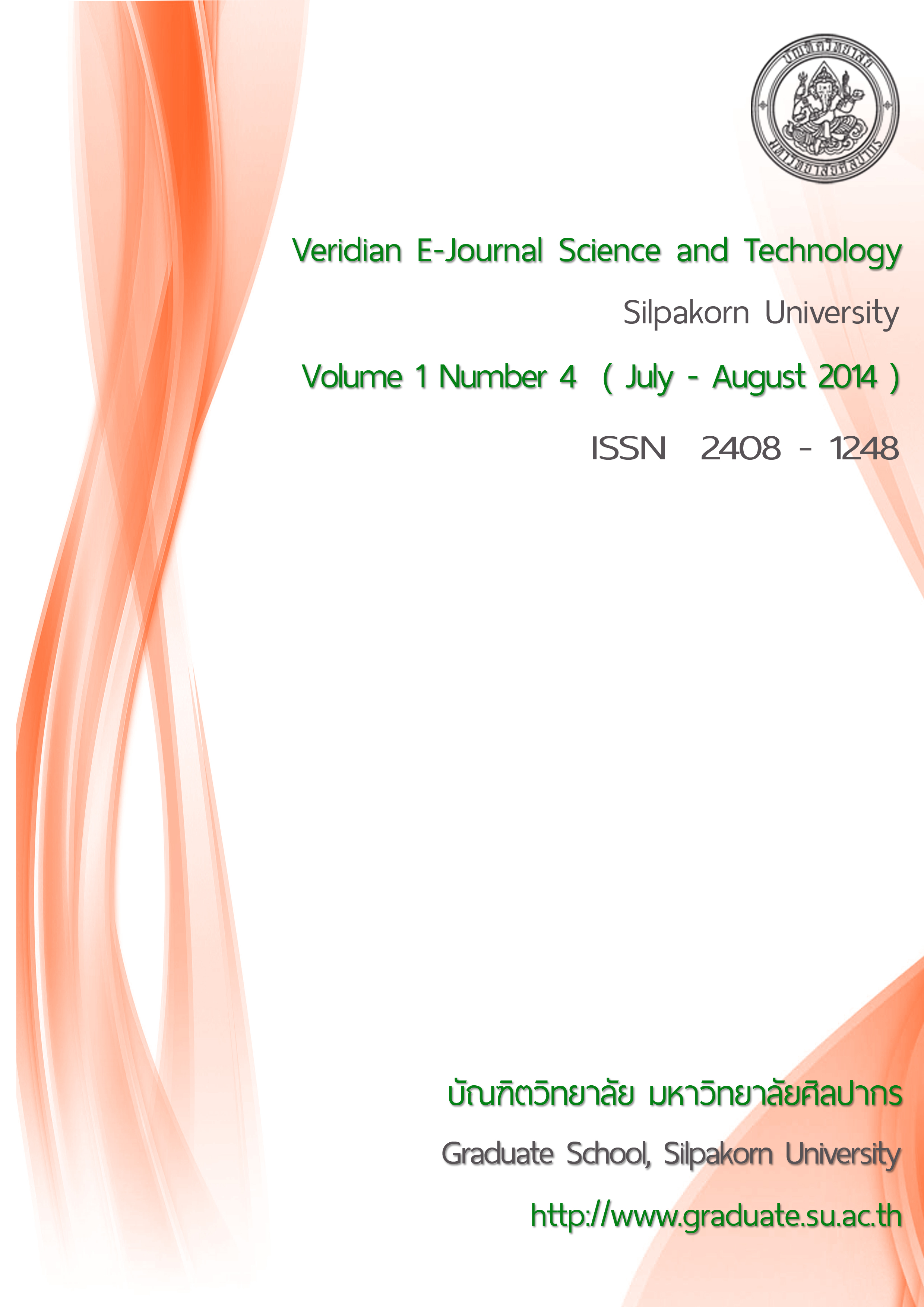องค์ประกอบทางเคมีของลายนิ้วมือที่มีผลกระทบต่อการติดของลายนิ้วมือแฝงในประชากรไทย
Main Article Content
Abstract
บทคัดย่อ
การทำให้ลายนิ้วมือแฝงปรากฏขึ้นทั้งในที่เกิดเหตุและในห้องปฏิบัติการ โดยใช้กระบวนการทางเคมีฟิสิกส์ และการตรวจด้วยสายตาเพื่อใช้ในการพิสูจน์เอกลักษณ์บุคคลนั้น วิธีการที่จะเก็บรอยลายนิ้วมือแฝงที่สัมผัสให้ปรากฏขึ้นมาและมีลายเส้นชัดเจนเพียงพอต่อการตรวจพิสูจน์เปรียบเทียบนั้น ไม่เพียงขึ้นอยู่กับวิธีการที่เลือกใช้ ยังขึ้นอยู่กับสารที่เป็นองค์ประกอบของลายนิ้วมือและปัจจัยทางสภาวะแวดล้อมขณะเกิดการประทับของนิ้วมือบนพื้นผิวที่ตรวจเก็บรอยลายนิ้วมือแฝงด้วย ในงานวิจัยนี้ได้ศึกษาผลองค์ประกอบทางเคมีที่มีต่อคุณภาพการติดของลายนิ้วมือแฝงในประชากรไทย จากสารคัดหลั่งจากต่อมเหงื่อที่กระจายอยู่บนเส้นนูนของลายนิ้วมือ และองค์ประกอบทางเคมีอื่นๆที่สามารถปนเปื้อนในลายนิ้วมือได้ ซึ่งอาจมาจากสารคัดหลั่งจากต่อมอื่นของร่างกาย เช่น ต่อมไขมัน เป็นต้น หรือสารปนเปื้อนจากแหล่งอื่น เช่น สารจากผลิตภัณฑ์บำรุงผิว และสารจากเครื่องสำอางค์ เป็นต้น และทำการตรวจเก็บลายนิ้วมือแฝงโดยวิธีทางเคมี ซึ่งสารเคมีที่ใช้ คือ นินไฮดริน (ninhydrin) โดยพิจารณาจากความชัดเจนของสีน้ำเงินม่วง (Ruhemann’s purple) ของลายพิมพ์นิ้วมือแฝง ที่เกิดจากปฏิกิริยาระหว่างนินไฮดรินกับกรดอะมิโนที่เป็นองค์ประกอบในสารคัดหลั่งจากต่อมเหงื่อที่ทำให้เกิดลายนิ้วมือแฝง พบว่าทั้งในกลุ่มตัวอย่างแบบ ‘natural’ และแบบ ‘groomed’ นั้น บุคคลที่มีปริมาณเหงื่อที่ฝ่ามือ และใบหน้ามาก จะมีสีน้ำเงินม่วง (Ruhemann’s purple) ของลายพิมพ์นิ้วมือแฝงชัดเจนมากที่สุด แสดงว่ามีการหลั่งกรดอะมิโนและเพปไทด์ออกมามาก การศึกษาผลจากองค์ประกอบทางเคมีอื่นๆที่สามารถปนเปื้อนในลายนิ้วมือ พบว่าตัวอย่างแบบ ‘groomed’ คือตัวอย่างที่ใช้เครื่องสำอางค์จะมีผลในการบดบังการเกิดลายพิมพ์นิ้วมือแฝง ทำให้เห็นสีน้ำเงินม่วง (Ruhemann’s purple) ของลายพิมพ์นิ้วมือแฝงไม่ชัดเจน ส่วนการใช้ผลิตภัณฑ์บำรุงผิวไม่มีผลในการบดบังการเกิดลายพิมพ์นิ้วมือแฝง นอกจากนั้นยังพบว่าสีน้ำเงินม่วง (Ruhemann’s purple) ของลายพิมพ์นิ้วมือแฝงของเพศชายมีแนวโน้มชัดเจนกว่าเพศหญิง งานวิจัยนี้แสดงให้เห็นว่าปัจจัยจากองค์ประกอบทางเคมีของลายนิ้วมือ และองค์ประกอบทางเคมีอื่นๆที่สามารถปนเปื้อนในลายนิ้วมือ ส่งผลกระทบต่อคุณภาพการติดของลายนิ้วมือแฝงในประชากรไทย
Abstract
The enhancement of latent fingerprints, both at the crime scene and in the laboratory using an array of chemical, physical and optical techniques, is critical for identification. The techniques that make the enhancement of latent fingerprints to be apparent for identification depend not only on the optional techniques but also on understanding of latent fingerprint chemical compositions and the contaminations from the environment during the latent fingerprint deposition. In this study, the chemical compositions of the secretion from the exocrine glands on the ridge of fingerprint, the secretion from sebaceous gland, the chemical compositions from skincare lotions, include cosmetics that effect latent fingerprinting among Thai populations were examined by ninhydrin reaction. This study monitored the intensity of the color of the Ruhemann’s purple of latent fingerprints from ninhydrin reaction with amino acids and peptides which are the chemicals secreted from the exocrine gland. The resulted indicated that the intensity of the color of ninhydrin-reacted fingerprints depends on the level of palm and face’s sweat, both in the ‘natural’ samples and in the ‘groomed’ samples. Furthermore, it was clearly shown in ‘groomed’ samples which the donors used cosmetics that touching sebum-rich areas of the face prior to fingerprint deposition blocked out the latent fingerprints. Such practice of cosmetic use resulted in a significant decrease in the color of ninhydrin-reacted fingerprints. However, the latent fingerprinting of the donors who used the skincare lotion was not affected by the use of lotion. Furthermore, it was found that male donors tended to show higher intensity of the ninhydrin-reacted fingerprints than the female donors. This study demonstrated interplay between chemical compositions of fingerprints and the environmental chemical compositions on the qualitative analysis of latent fingerprints among Thai population.

